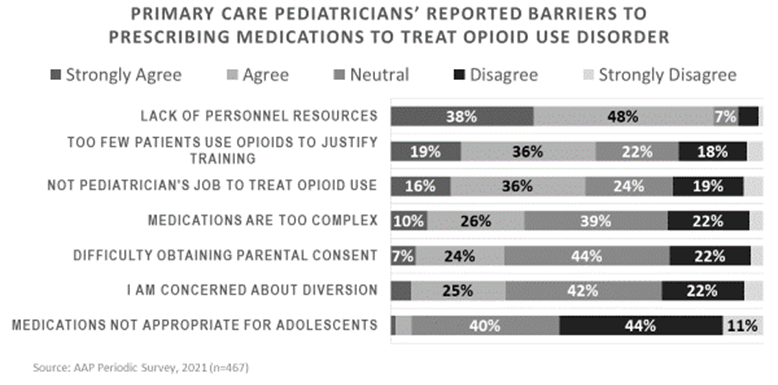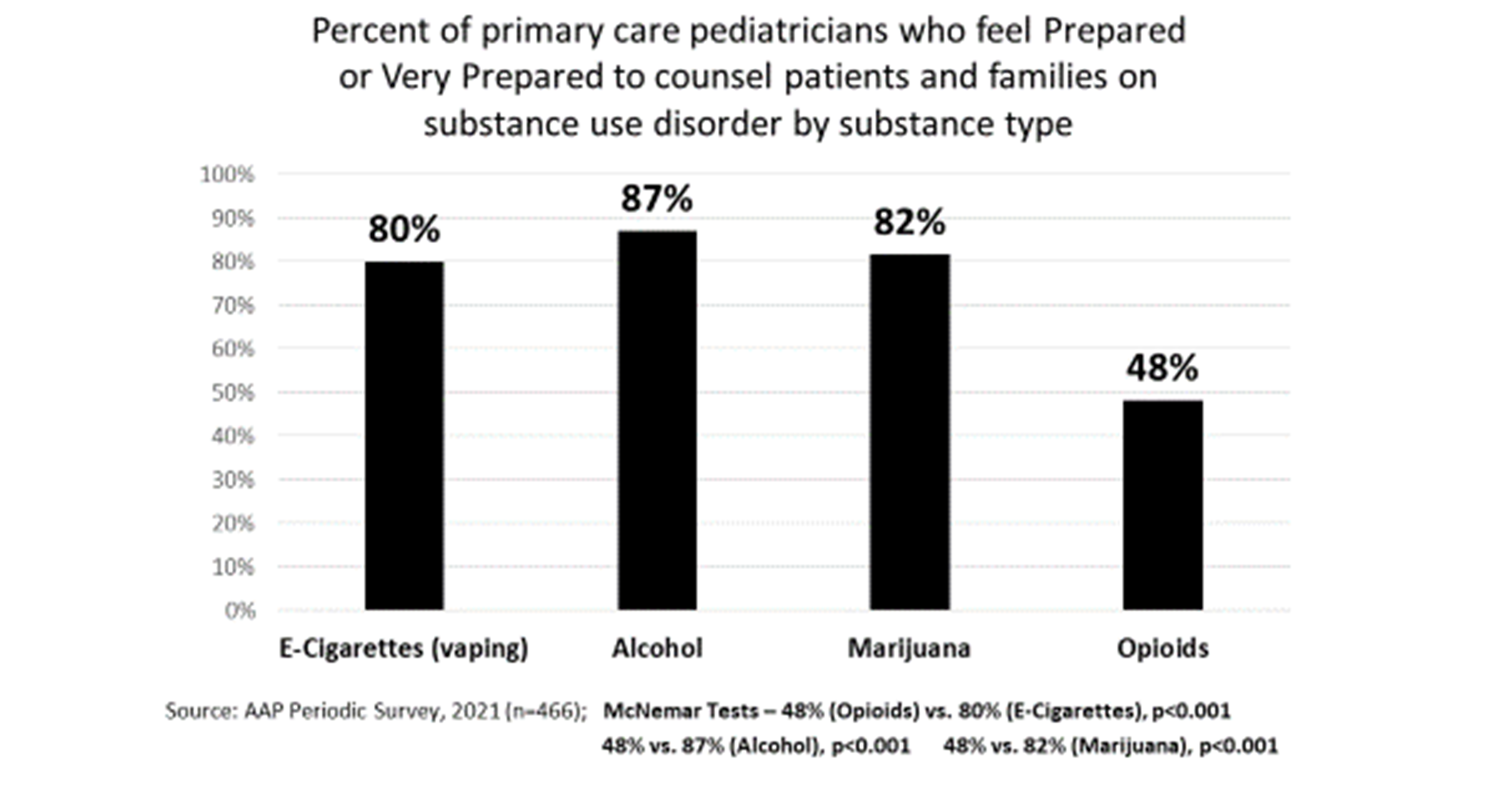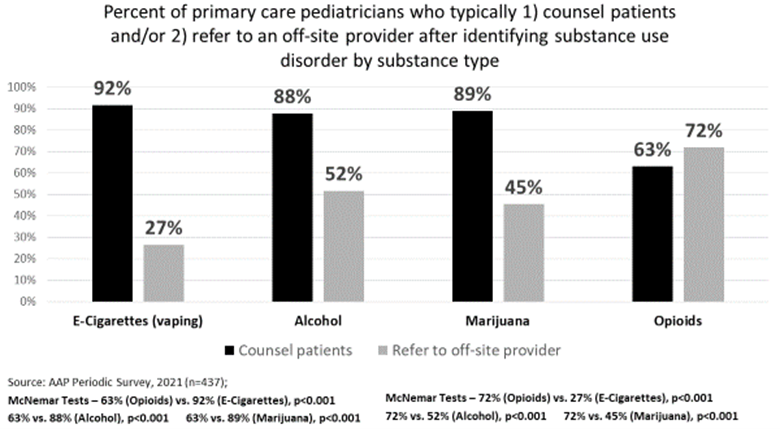Hadland S, Burr W, Zoucha K, Somberg S, Camenga D
Presented at the 2023 Pediatric Academic Societies Annual Meeting
Background: Adolescent drug overdose deaths more than doubled from 2019-2021. In 2021, 3 in 4 of these deaths were attributed to opioids. The American Academy of Pediatrics (AAP) and other professional societies recommend that pediatricians treat adolescent opioid use disorder (OUD) in primary care, including use of medications (i.e. buprenorphine; naltrexone).
Objective: Examine primary care pediatricians’ perceptions, preparedness, and practices related to treating adolescent OUD, and barriers to medication use.
Methods: We analyzed data from the nationally representative 2021 Periodic Survey of AAP non-retired US members (residents excluded). The survey probed pediatricians’ perceptions of their responsibilities regarding substance use treatment and barriers to prescribing medications for OUD. 43% completed the survey (data weighted for age non-response bias). Analytic sample was limited to pediatricians who provide health supervision (n=471). To compare respondents’ comfort treating OUD relative to other substance use disorders (i.e. nicotine, alcohol, cannabis), we used McNemar tests to examine percent of respondents who reported 1) preparedness to counsel patients on opioid use vs. other substances (Very prepared/Prepared vs Very Unprepared/Unprepared/ Neutral), and 2) typically treating adolescents at risk for substance use disorder by counseling (Yes vs No) and/or referral (Yes vs No) vs other substances.
Results: Most primary care pediatricians strongly agreed/agreed it is their responsibility to identify substance use disorders (94%) and refer patients to treatment (97%). Fewer felt responsible for treating substance use disorders (20%) and prescribing medications for addiction treatment (12%). Although 24% reported diagnosing a patient with OUD, only 6% had ever prescribed medication to treat OUD. Barriers to prescribing medication included “Lack of personnel resources” (86% strongly agreed/agreed) and “Too few patients use opioids to justify training” (55% strongly agreed/agreed)[Figure 1]. Fewer felt very prepared/prepared to counsel patients on opioid use compared to other substances (p<0.001)[Fig 2] or typically counseled patients with OUD compared to other substances (p<0.001)[Fig 3]. More referred to off-site providers for treatment for OUD compared to other substances (p<0.001)[Fig 3].
Conclusion: In the context of rising adolescent opioid overdose mortality, pediatricians may lack resources, comfort, and experience managing OUD. Stronger medical education—as well as more resources to support OUD treatment in primary care—may be needed to bolster pediatricians’ care of adolescents with OUD.
Figure 1. Primary care pediatricians’ reported barriers to prescribing medications to treat opioid use disorder

Figure 2. Percent of primary care pediatricians who feel prepared or very prepared to counsel patients and families on substance use disorder by substance type
 Figure 3. Percent of primary care pediatricians who typically 1) counsel patients and/or 2) refer to an off-site provider after identifying substance use disorder by substance typebstance typed families on substance use disorder by substance type
Figure 3. Percent of primary care pediatricians who typically 1) counsel patients and/or 2) refer to an off-site provider after identifying substance use disorder by substance typebstance typed families on substance use disorder by substance type
Last Updated
05/22/2023
Source
American Academy of Pediatrics